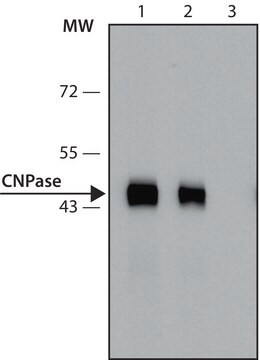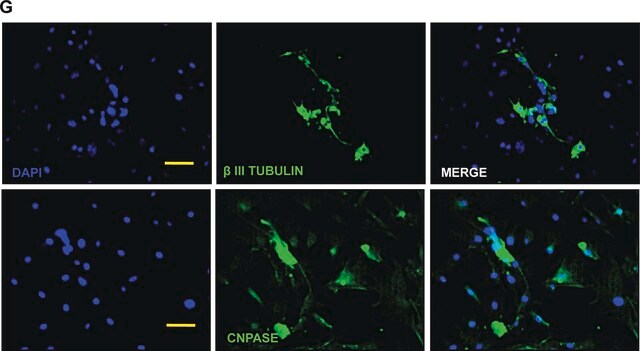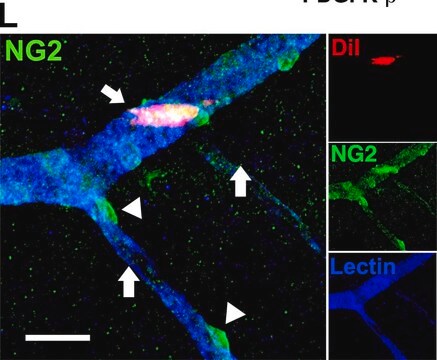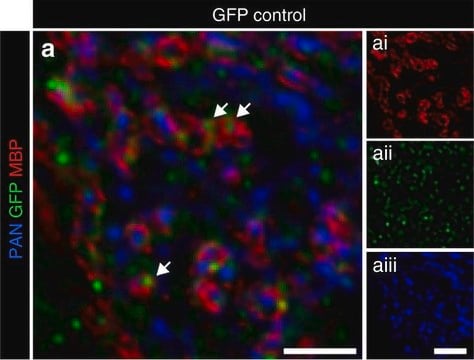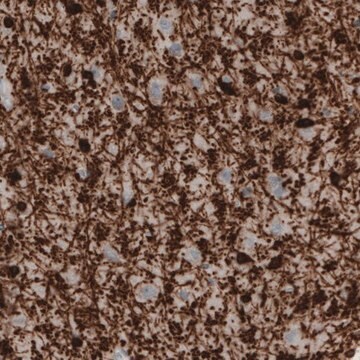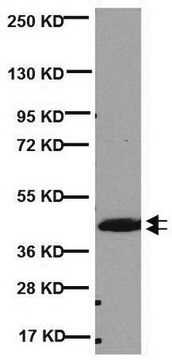C5922
Monoclonal Anti-CNPase antibody produced in mouse
clone 11-5B, ascites fluid
Synonym(s):
Anti-CNP1, Anti-HLD20
About This Item
Recommended Products
biological source
mouse
Quality Level
conjugate
unconjugated
antibody form
ascites fluid
antibody product type
primary antibodies
clone
11-5B, monoclonal
contains
15 mM sodium azide
species reactivity
mouse, rat, bovine, canine, pig, human, rabbit, sheep
should not react with
guinea pig, chicken
technique(s)
immunohistochemistry: suitable using brain sections
indirect ELISA: suitable
microarray: suitable
western blot: 1:500 using fresh bovine brain extract
isotype
IgG1
UniProt accession no.
shipped in
dry ice
storage temp.
−20°C
target post-translational modification
unmodified
Gene Information
human ... CNP(1267)
mouse ... Cnp(12799)
rat ... Cnp(25275)
General description
The enzyme isolated from mammalian brain is primarily a mixed dimer of approximately 94 kDa. The dimer consists of a varied proportion of CNP1 (46 kDa) and CNP2 (48 kDa) subunits in various species. The high levels of CNPase observed in oligodendrocytes and Schwann cells portend a vital role of this enzyme in the normal function of these cells. They are distinguished from nearly all other cells by their ability to synthesize and maintain vast amounts of multilamellar membrane, known as myelin. It seems very likely that CNPase is expressed at high levels in these particular cells to facilitate the elaboration and maintenance of myelin or to carry out functions imposed or afforded by the unique membrane structure of myelin. Since the enzyme is a myelin-associated enzyme, it is of considerable interest in the study of diseases and disorders in which myelin is affected, such as multiple sclerosis, subacute sclerosing panencephalitis, acquired immunodefi ciency with CNS involvement, peripheral neuropathies, etc. Another important use is the study of reinnervation of the neuromuscular junction and the identification of oligodendrocyte progenitor cells, very early in postnatal development.
Specificity
Immunogen
Application
Disclaimer
Not finding the right product?
Try our Product Selector Tool.
recommended
Storage Class Code
11 - Combustible Solids
WGK
WGK 1
Certificates of Analysis (COA)
Search for Certificates of Analysis (COA) by entering the products Lot/Batch Number. Lot and Batch Numbers can be found on a product’s label following the words ‘Lot’ or ‘Batch’.
Already Own This Product?
Find documentation for the products that you have recently purchased in the Document Library.
Our team of scientists has experience in all areas of research including Life Science, Material Science, Chemical Synthesis, Chromatography, Analytical and many others.
Contact Technical Service